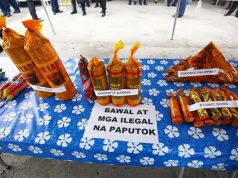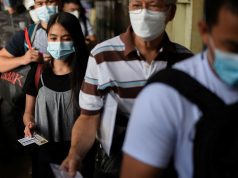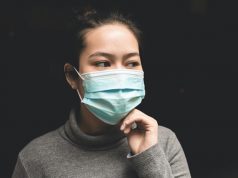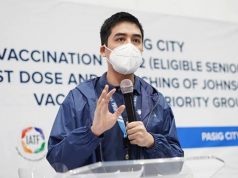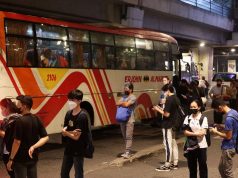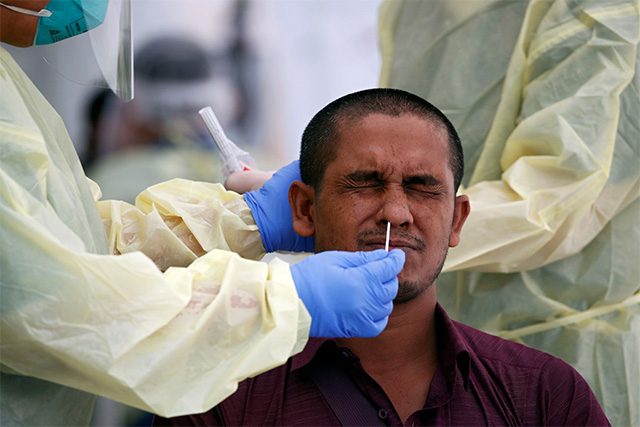
The Department of Health‘s sudden new adjustment for the criteria of recovered cases confused many and resulted in an odd data trend of the novel coronavirus when placed side by side other Southeast Asian countries.
In a statement issued on July 30, the DOH explained its new effort called Oplan Recovery, wherein its data team implemented a “mass recovery” adjustment. They re-tagged or categorized all individuals with mild symptoms or who are asymptomatic as “recovered” despite not having taken tests declaring them cleared of the virus.
This resulted in 5,000 additional recovered cases on July 30 which brought the total to 38,075 in DOH’s case bulletin on the same day.
DOH TAGS 38K RECOVERIES FROM OPLAN RECOVERY Press Release/30 July 2020Due to enhanced data reconciliation efforts with…
Posted by Department of Health (Philippines) on Thursday, July 30, 2020
Based on DOH’s Memorandum 2020-0258, endorsed by clinical practice guidelines and their technical advisory groups, patients with mild symptoms or not experiencing any symptoms are already tagged or considered recovered after 14 days since the start of symptoms or by date of specimen collection.
The DOH claimed that these new guidelines are already being implemented in health agencies in other countries.
“Current recovery policies now show that on the 10th day of illness, the risk of transmitting the virus to other people is significantly reduced. This clinical recovery protocol is followed by the US CDC, European CDC, and India,” it said.
Asymptomatic cases or those who have not shown signs of being sick must still follow the 14-day isolation period which starts the day after they underwent PCR testing.
“Upon assessment of a licensed physician, the patient can be tagged as recovered after completion of 14 days isolation period,” DOH said.
The previous directive states that COVID-19 patients do not require to be tested again if they no longer experience any COVID-19 symptoms for three days and they have completed the mandated 14-day period.
Odd trend
In line with the mass recovery adjustment, data analyst Edson Guido compared charts between the record-breaking spike of new confirmed cases to that sudden drop of active cases and the rise of recovered ones on Thursday, July 30.
The DOH reported 3,954 new cases which brought the total to 89,374, making the Philippines enter the ten countries in Asia with the most confirmed cases.
The health agency also announced 65,064 total recoveries, therefore the active cases suddenly dropped to 22,327.
Charts of today's DOH report.
Look at the:
1. Number of new cases today, a record-high (1st chart)
2. Number of recoveries in green (See that spike? 3rd and 4th charts)
3. Active cases in red (4th chart), now lower than total recoveries in greenJuly 30.
A record-breaking day. pic.twitter.com/UEjRrzI7BO— Edson (@EdsonCGuido) July 30, 2020
Because of the data changes, the Philippines now ranked only second to Indonesia in the number of currently infected patients.
The Philippines also no longer has the lowest recovery rate in Southeast Asia.
What this means:
1. PH active cases
July 29: 56,528
July 30: 22,327 ⬇️2. PH recovery rate
July 29: 32%
July 30: 73% ⬆️– From #1 in ASEAN in active cases (and #12 worldwide) to #2 behind Indonesia today.
– Also, PH recovery rate is no longer the lowest in ASEANAll in a day. pic.twitter.com/KkqcFgSFkA
— Edson (@EdsonCGuido) July 30, 2020
Science organization Earth Shaker Philippines described this new trend as “weird.” It also shared another version of a chart that compared the COVID-19 situation among countries in the region.
They cited the statistics website Worldometer as their data source.
“We’re the only ASEAN country with such weird trend,” the organization said.
WEIRD GRAPH: After re-tagging and some "adjustments", the current number of Active Cases in the Philippines dropped to 22,327 today.
We're the only ASEAN country with such weird trend. pic.twitter.com/CbIt9CVFGm
— EarthShakerPH (@earthshakerph) July 30, 2020
Early this July, DOH trumpeted its success in its efforts to address data backlogs through the COVIDKaya platform.
A COVID-19 Surveillance and Quick Action Unit was created dedicated to “data collection, validation, and reconciliation of information available at the local and national level.”
“These massive data reconciliation efforts have resulted in faster and more accurate tagging of health statuses-particularly on deaths and recoveries. Data on recovery reconciliations will be reported every 15 days,” it said.
Updated criteria from international health bodies
In a statement last May 27, the World Health Organization updated its criteria on discharged infected patients with the deadly virus from isolation or “discontinuing transmission-based precautions” without retesting:
- For symptomatic patients: 10 days after symptom onset, plus at least 3 additional days without symptoms (including without fever and without respiratory symptoms)
- For asymptomatic cases: 10 days after a positive test for SARS-CoV-2
The DOH, however, only applied this recommendation two months after, on July 30.
The WHO explained that the change in its recommendation for mild and asymptomatic patients to get two negative RT-PCR or swab tests were based on the limited capacities of member-states.
“In consultations with global expert networks and Member-States, WHO has received feedback that applying the initial recommendation of two negative RT-PCR tests at least 24 hours apart, in light of limited laboratory supplies, equipment, and personnel in areas with the intense transmission, has been extremely difficult, especially outside hospital settings,” their statement read.
Following such an update, the United States Centers for Disease Control and Prevention also updated its guidelines on the duration of isolation and precaution.
“Isolation and precautions can generally be discontinued 10 days after symptom onset and resolution of fever for at least 24 hours, without the use of fever-reducing medications, and with the improvement of other symptoms,” CDC said.
Those who never developed symptoms, meanwhile, can already discontinue isolation and other precautionary measures after 10 days from “the date of their first positive RT-PCR test for SARS-CoV-2 RNA.”
Unlike DOH, notice that both health organizations did not use the term “recovered” in their new guidelines of COVID-19 cases.
Why was there public confusion?
Reports of these changes, particularly the “mass recovery” approach, were heavily criticized, saying this is a form of data manipulation by the government.
The phrases “Department of Ha,” “Duque resign” and “mass recovery” trended on Twitter as Filipinos aired their ire against the agency and Health Secretary Francisco Duque online.


Some medical professionals were disappointed that the DOH chose to stress the new count on recoveries, seemingly downplaying the largest daily jump in total confirmed cases of almost 4,000.
“May mali sa presentation ng data. May intention to mislead. Recoveries ang highlight, hindi total cases,” dermatologist Dr. Winlove Mojica said.
May mali sa presentation ng data. May intention to mislead. Recoveries ang highlight, hindi total cases.
Kulang ang effort para mai-relay nang simple ang ibig sabihin ng data. Kahit sa DOH viber group, yung mga heavy data ay in English.
Communication crisis in a pandemic.
— Dr. Winlove Mojica (@theskinsensei) July 30, 2020
Dr. Tony Leachon, ex-special adviser of the National Task Force for COVID-19, likewise said that the DOH should’ve explained US-CDC’s advisories earlier.
“Risk strategic communication is key to allay the anxiety of a stressed and confused populace,” Leachon said.
Risk strategic communication is key to allay anxiety of a stressed and confused populace.The US CDC &other guidelines should have been explained in the first week ofJuly so we won’t be surprised with abrupt changes in number of recoveries. @SayChiz @iamkarendavila https://t.co/DeutOXy2SO pic.twitter.com/0nAIi7E6T4
— Tony Leachon MD (@DrTonyLeachon) July 30, 2020





